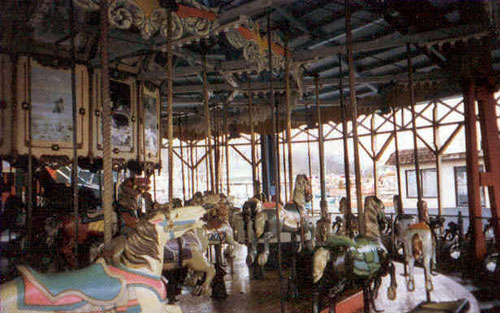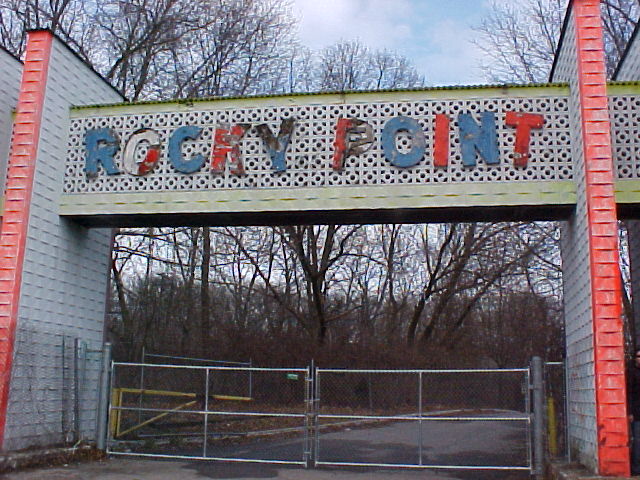
Rocky Point Amusement Park had been a generational fixture of Rhode Island for over a hundred years and the nation’s second oldest theme park when it was closed in 1996. Started in 1847 by Captain William Winslow, Rocky Point was originally established as a small resting point for passengers on Winslow’s ship; restaurants and rides were first started in the area, and more attractions quickly turned Rocky Point into a popular tourist destination. Roller coasters, a ferris wheel, a saltwater pool, and a mini railroad installation all earned the park the nickname, “New England’s most beautiful amusement park” (Rocky).
The late forties marked the beginning of Rocky Point’s golden years--the period that is most familiar to those who remember the park’s brightly colored rides, clam chowder, clam cakes, and games. A group of new rides were introduced including the Cyclone, a 55 mph roller coaster, and the Free Fall, a vertical track that dropped riders twelve and a half stories straight down.
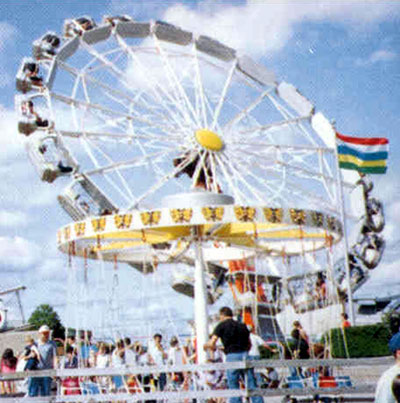
A search through Art in Ruins, a website dedicated to abandoned buildings and forgotten sites, reveals comments from hosts of people who have memories of sweaty summers, first dates, family outings, and summer jobs embedded in Rocky Point Park. One commenter by the name JAMES THOMAS writes, “Rocky Point is like a member of my family. My great grandmother had a cottage at Rocky Beach and spent every summer there. My mother grew up there. My parents met there.” Others recall certain smells, foods, or particular rides and their idiosyncrasies. One person writes, “My favorite ride was the Free Fall, which kept breaking every two minutes. I remember one or two times it broke while we were on it. That ride was so much fun.” Everyone commenter on the website has a personal memory attached to Rocky Point--it is a place where a girl had her first kiss, where a pair of cousins used to go every summer, where a group of students from Europe worked for the summer. The earth that Rocky Point sits on is a breathing hallowed ground that exhales memories of youth, excitement, and happiness (AIR).
Rocky Point Park filed for bankruptcy in December of 1994 after failing to pay its taxes on time. An auction was scheduled for mid-April of 1996 where games, booths, chairs, and all other equipment belonging to the park were sold. Rides were sold, dismantled, and shipped to other parks. All that were left to remain are old ticket booths, dilapidated structures that used to house first aid stations, games, or funhouses, fragments of rides with their metal parts oxidizing and bent out of shape, and the distinct Rocky Point entry way which used be painted in bright primary colors. These remnants of the park along with trash, fading signs, and train tracks that no longer carry anything are fenced away from visitors and vandals, many of whom manage to trespass the haunting site anyway (Rocky).
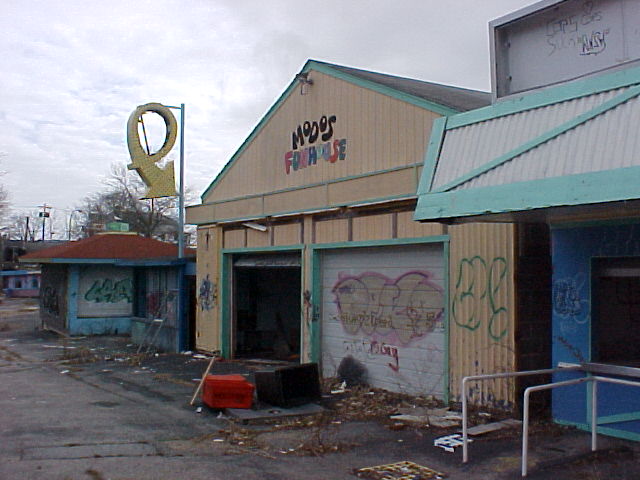
Something that I personally found fascinating was the range of different memories associated with the same setting that is Rocky Point Park. On the site Art in Ruins, past visitors of the park commented on the same rides, the same booths, the same restaurants, and the same smells that permeated the space. However, each person has a different personal memory associated with this larger shared site. This brings into mind Pierre Nora’s definition of memory; Nora writes, “memory is by nature multiple and yet specific; collective, plural, and yet individual” (Nora). While everyone who visited Rocky Point recalls the space as one of fun and excitement, specific rides, corners, steps, and booths hold different sentiments and swirling bits of memories for each person, creating a collective memory that is also highly specific to the individual.
Reading about Rocky Point also made me question how this space would be classified according to Nora. Would it be considered a “milieux de memoire”, a “lieux de memoire”, or would it depend on the observer? Although Nora considers a space to become a “lieux de memoire” when “there is no spontaneous memory,” Rocky Point could have been a “lieux” even while it held spontaneous memories. Because the space had been in operation for so long, while a younger generation had fluid memories of the park, “in permanent evolution, open to the dialectic of remembering and forgetting,” an older generation at the same time may have stowed away their memories of Rocky Point within the physicality of the park, making the space an archive, a “lieux de memoire.” Thus Rocky Point acted as a “milieux de memoire,” and a “lieux de memoire” at the same point in time, making it both a place of history and place of active memory.
Currently, Rocky Point sits stagnant, with chips of paint falling from abandoned buildings on the site, and rust eating away at scraps of metals left over from broken rides. One could say that this place that holds memories, this archive, this lieux de memoire is disintegrating and disappearing. After it deteriorates beyond recognition, the memories it holds will be set free; they will be unbound to anything except their owners’ minds. On the other hand, Rocky Point in its current state also functions as a “milieux de memoire” for people like me who have recently found out about the place and have no ties to the original operating park. I, and younger generation of children who have only seen Rocky Point behind fences in the degenerative state it is in now, associate this scene with active memory.
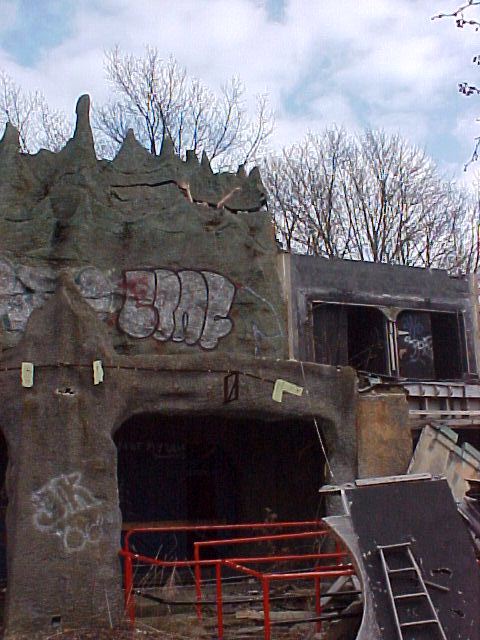
An amusement park is a place of magic, excitement, heat, the taste of saccharine junk food, shrilling laughter, and sweat. One imagines that all of these emotions, smells, and sounds related to an amusement park are innately part of the place, that they are linked to the very nature of a theme park. However, one could argue that all of the sentiments felt at an amusement park are more or less manufactured, since theme parks sell foods, thrills, and fun as commodities. Once this business collapses, all that is left is iron, steel, and wood, the framework of a house of fun that used to be. The overpowering sentiments felt at the park are now no where to be seen; all that remain are strings of memories swirling around the broken gears like the scent of cotton candy that used to waft between colorful dancing horses and serpentine metal coasters.
